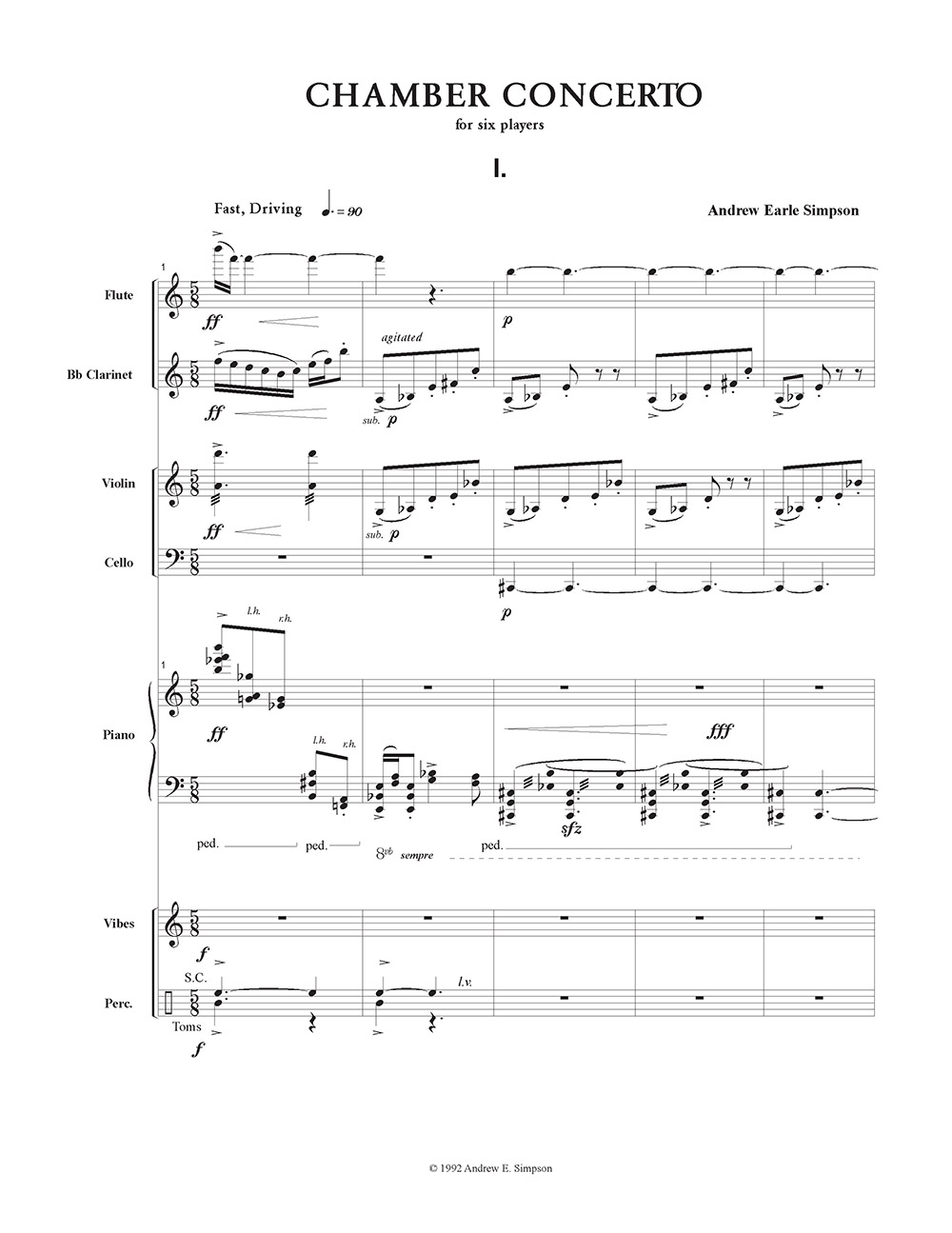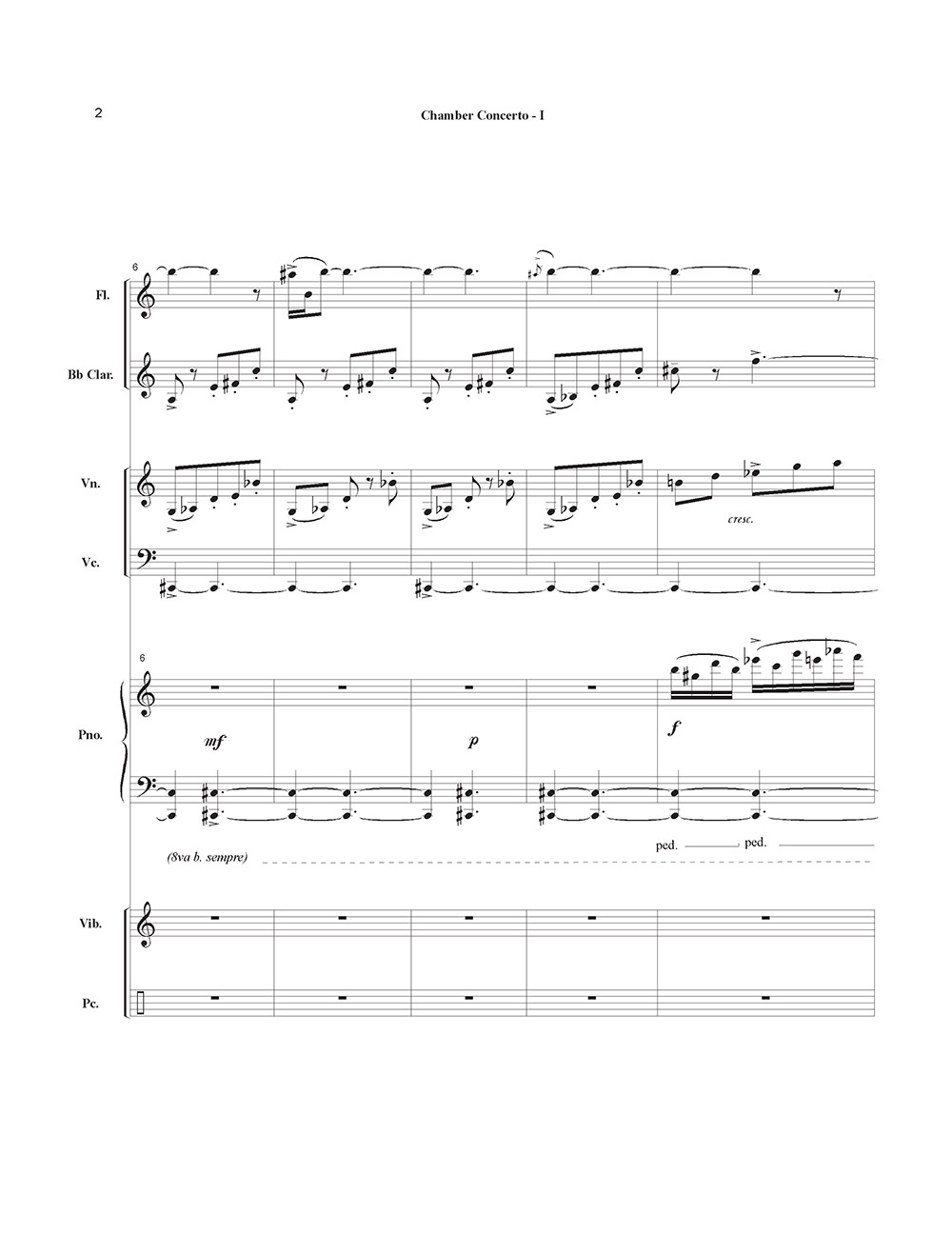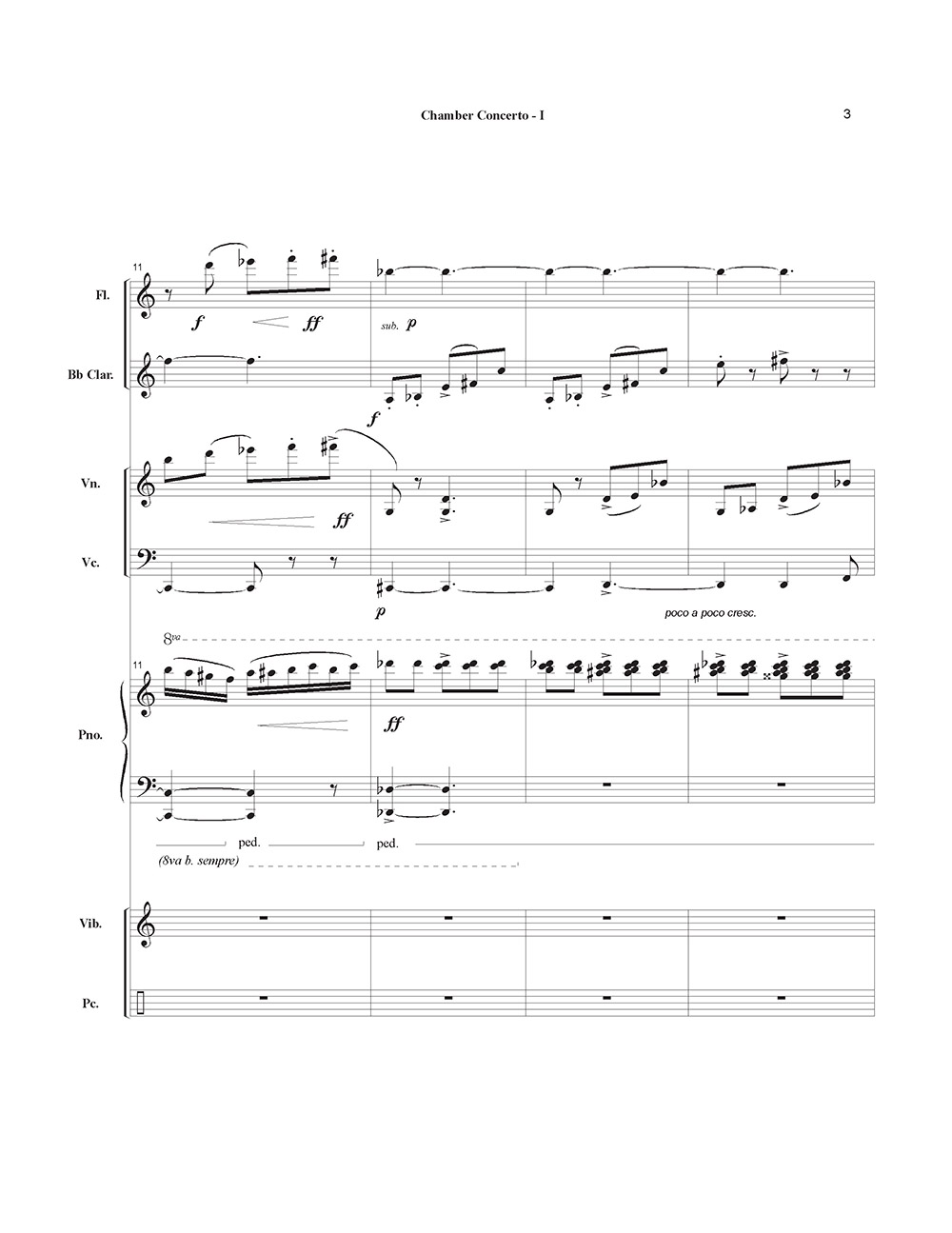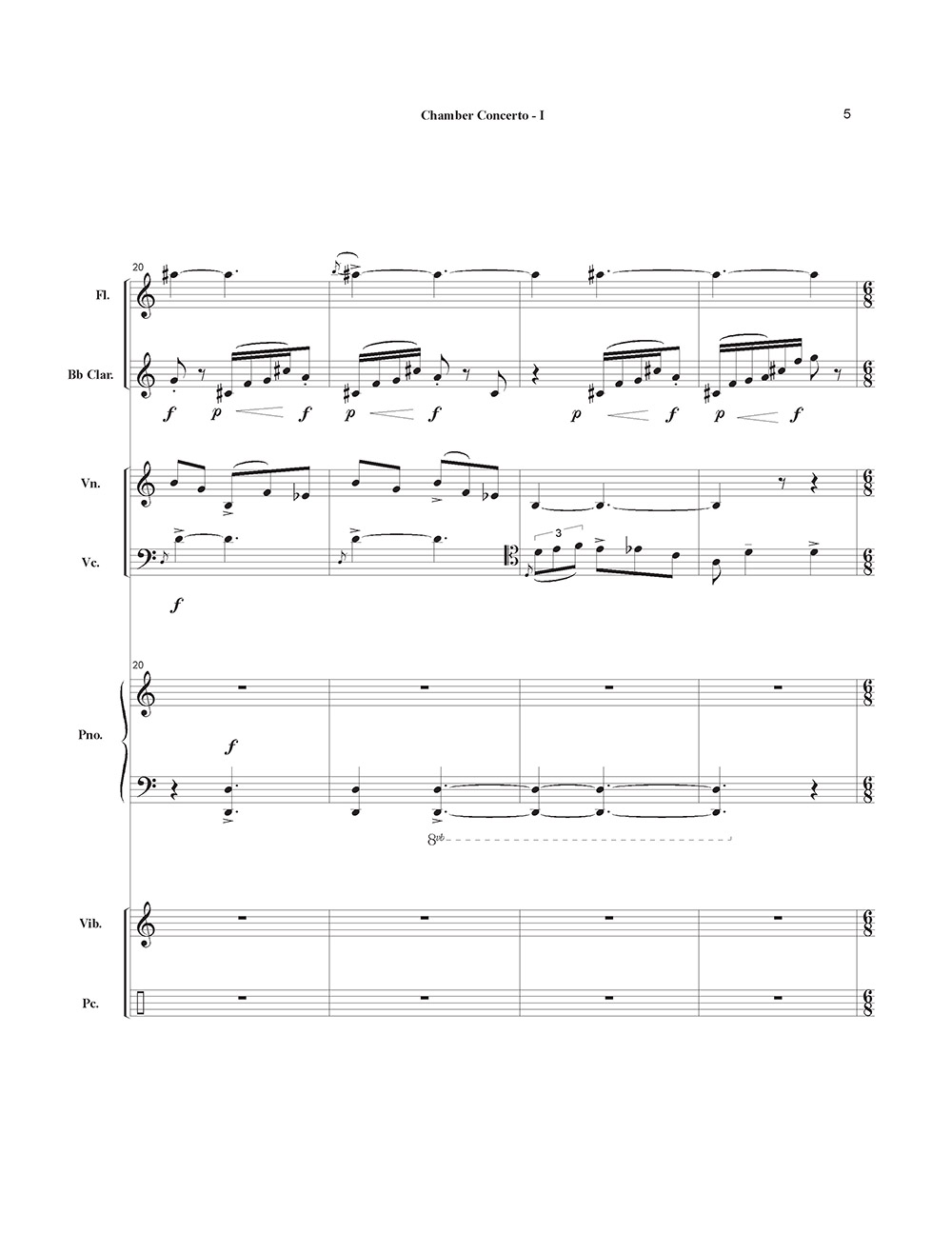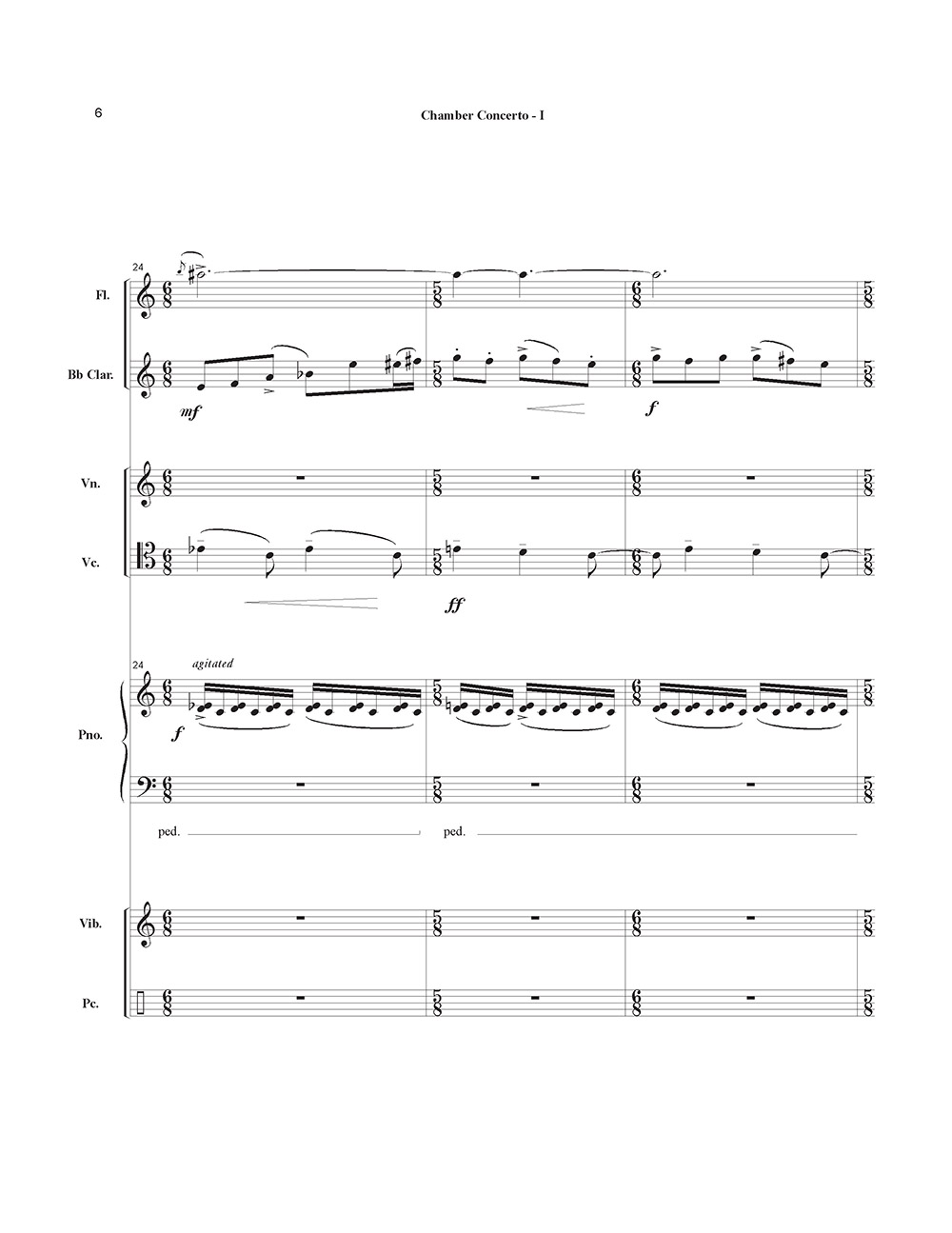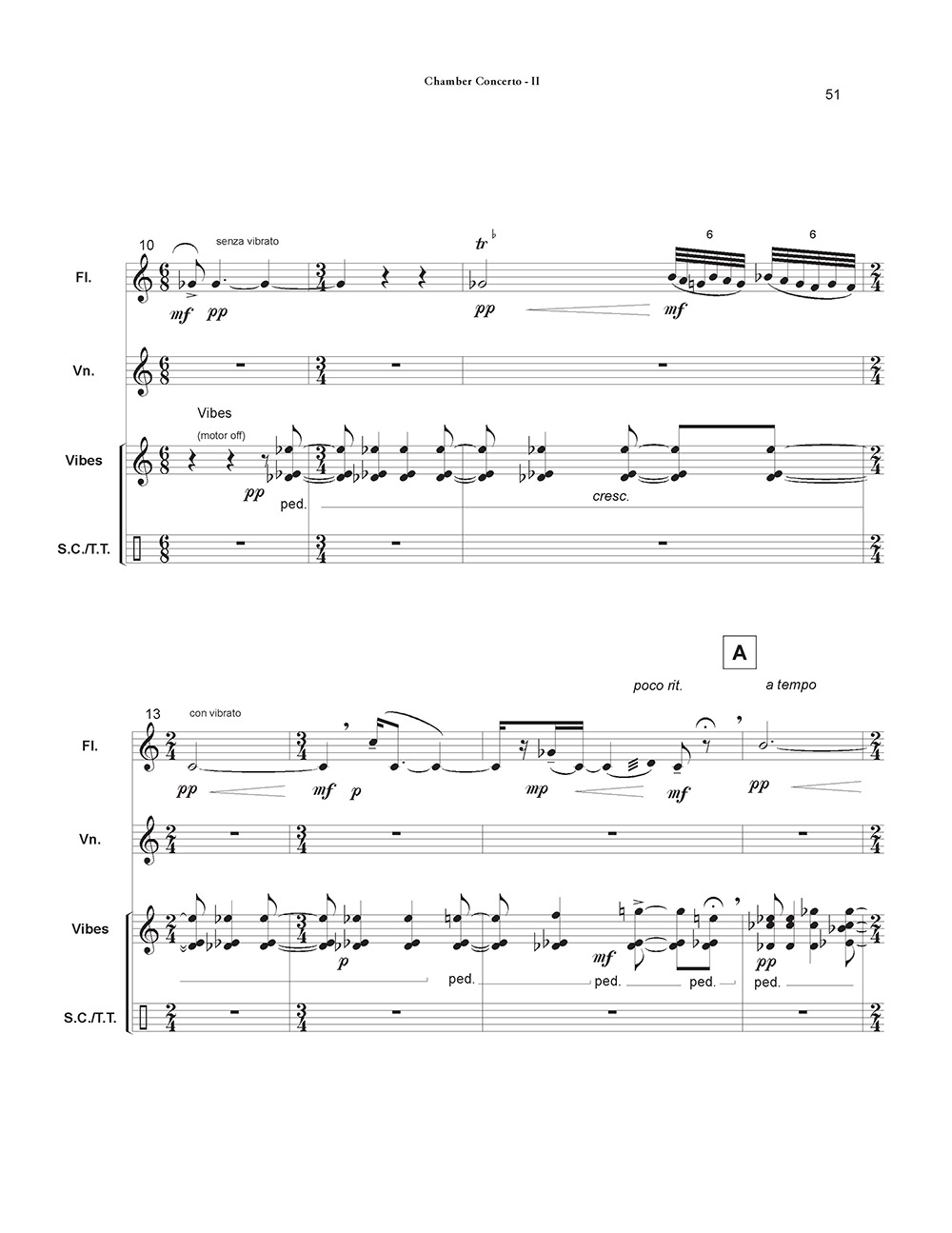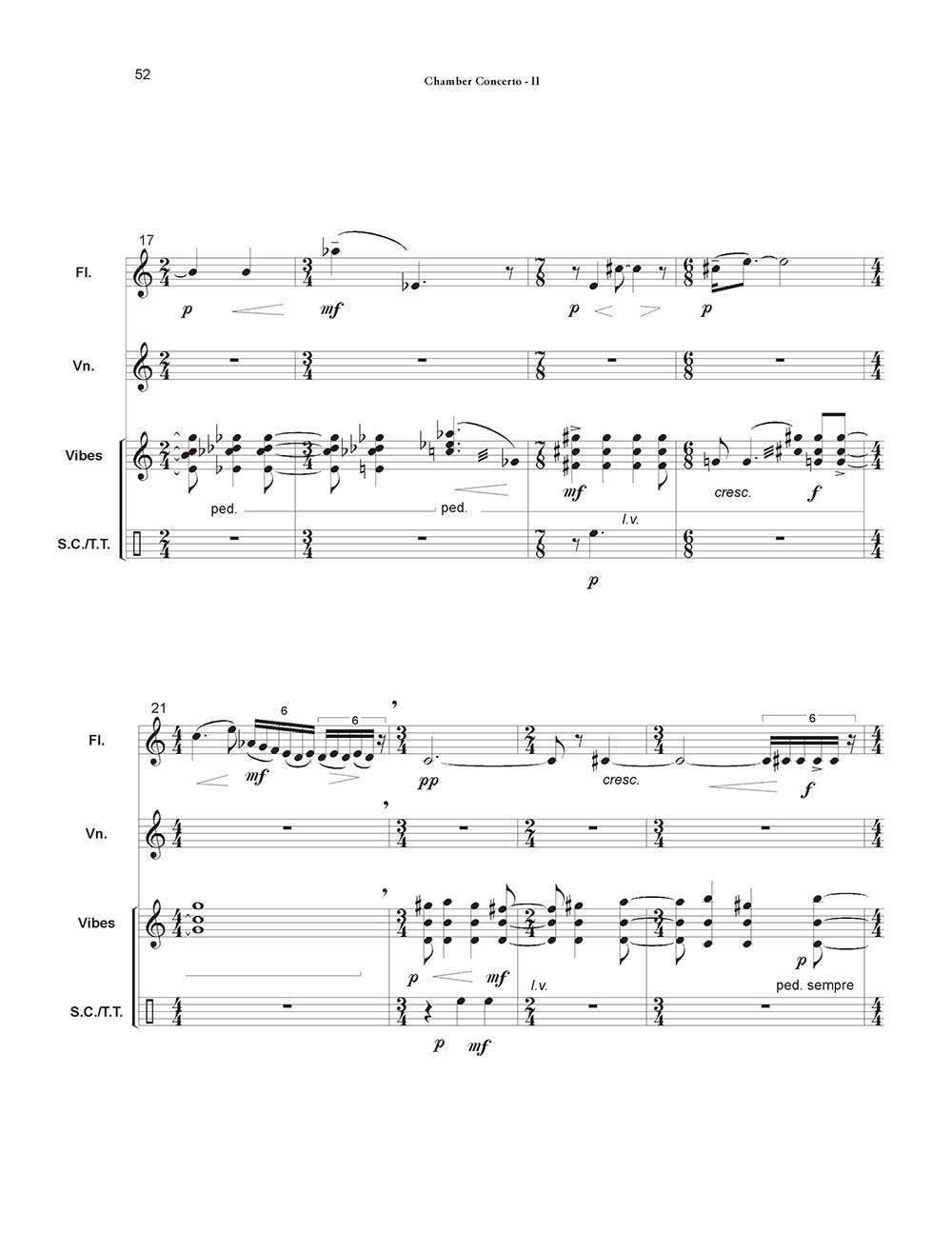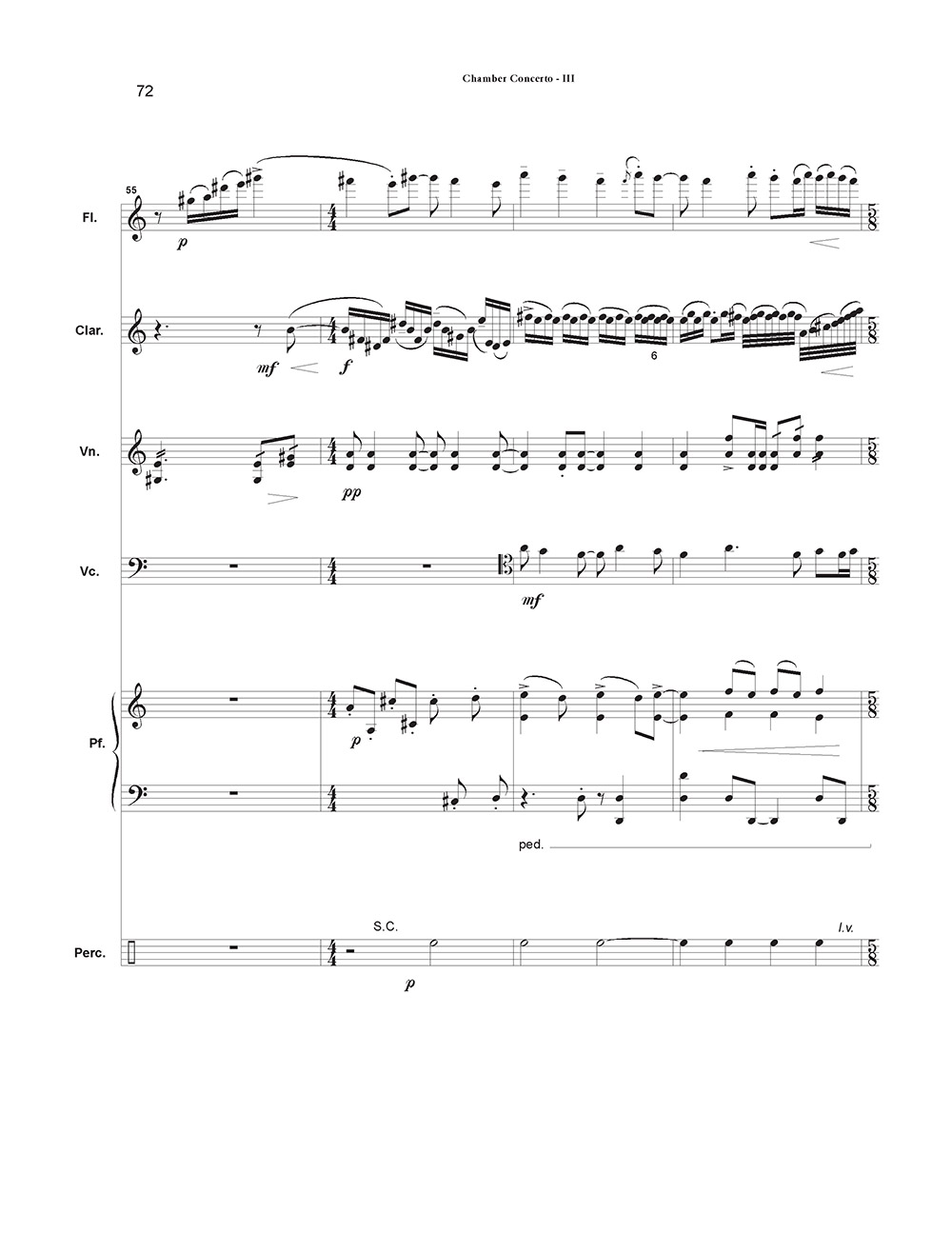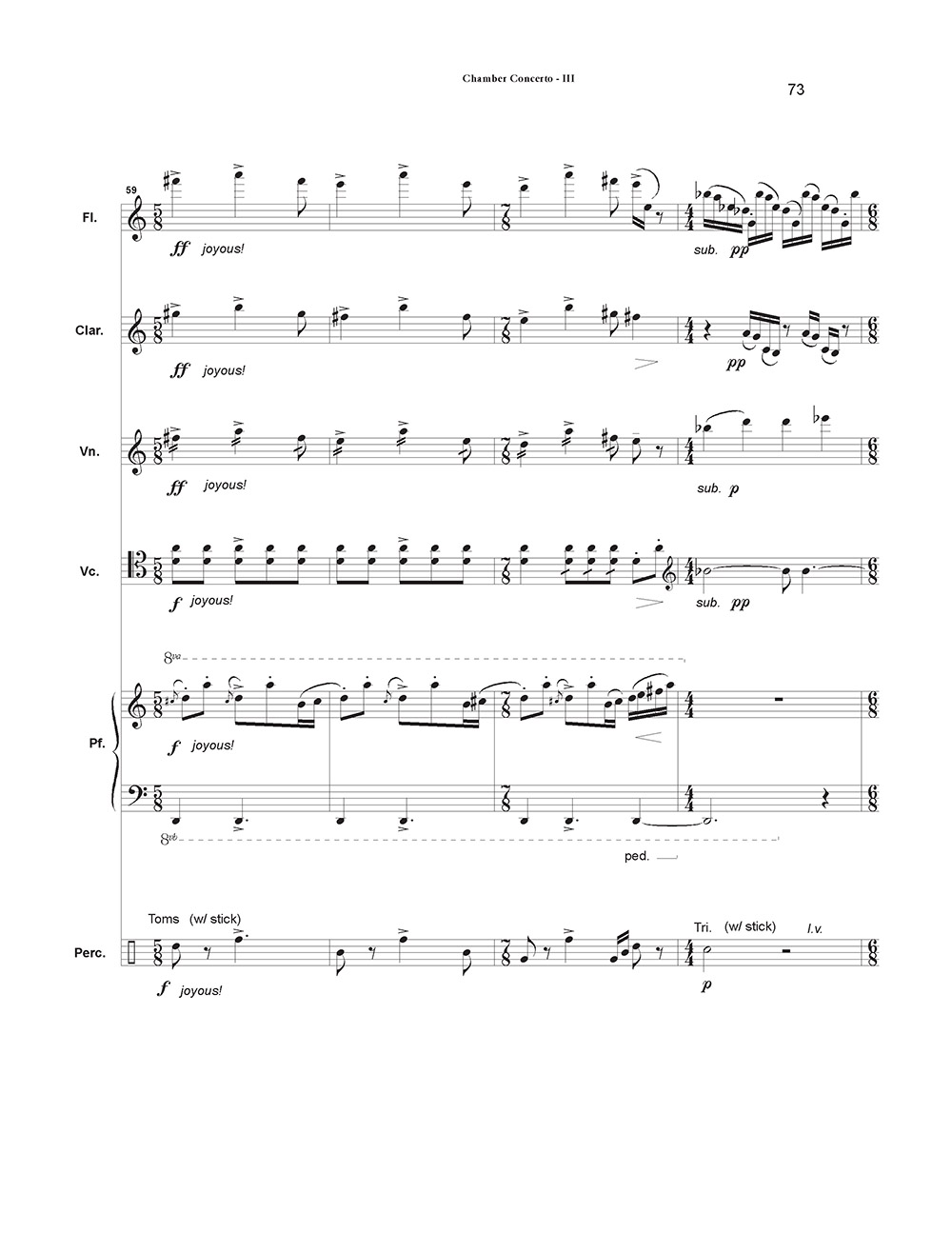Chamber Concerto (1992)
for chamber ensemble, 16 minutes
Instrumentation
flute, clarinet, violin, cello, piano, 1 percussion
This three-movement work (fast-slow-fast) has received many performances from numerous ensembles.
Recording
Exhortations (Athena Records), 1998
Listen
Movement I
Movement II
Movement III
Program Notes
The Chamber Concerto is an ebullient work in three movements for a chamber ensemble consisting of flute, clarinet, violin, cello, piano, and percussion. The piece requires great technical agility from all players and very close ensemble coordination. It was premiered in the spring of 1993 at Indiana University, Bloomington.
The first movement begins with a tutti explosion, from which an ostinato figure in 5/8 time emerges. The entire ensemble begins a long crescendo to the movement’s first climax, followed by a gentle, slow, contrasting section. The initial mood of the opening returns, and the movement ends quietly.
The second movement is a trio for flute, violin, and percussion. Percussion creates a quiet, soft atmosphere into which the flute enters in an extended solo. The violin enters unobtrusively toward the end of the movement, its entrance hidden in the wake of a suspended cymbal roll, and the second movement fades into silence.
An extended bravura violin cadenza paves the way from the second to the third movement. Near the end of its solo, the violin begins a repeated rhythmic motive which is taken up by the other instruments in turn. The finale, in a modified sonata form, is a joy ride of rapid passagework and constantly fluctuating meter. The first movement’s ostinato figure is heard to return briefly at the movement’s middle. An extended coda introduces new material based on earlier intervallic motives, and an extremely quick “cabaletta” (in Italian opera, a fast “tag” following a solo aria) brings the work to a triumphant conclusion.
—Andrew Earle Simpson
